We’re only a few days away from the MemFest Fine Art Charity Auction, and this event alone is worth the price of admission. You’ll see, and have a chance to buy, museum-grade art, which you should buy on the public’s behalf, then bequeath to your local museum. There may be tax benefits to your estate by so doing, but the social and cultural benefits far outweigh personal wealth. This can be a legacy that you can leave for future generations. Here’s an example:
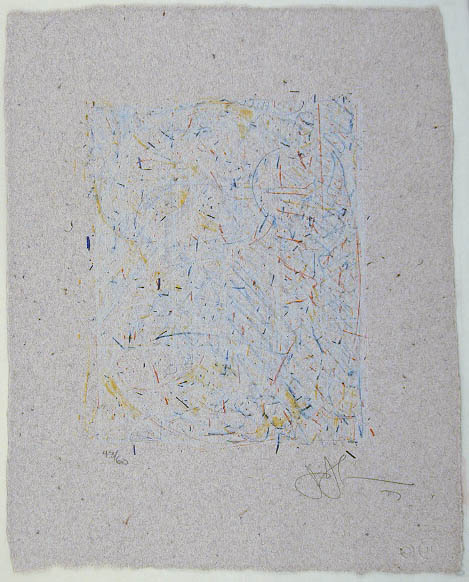 This is a very unusual form of Jasper Johns’ zero through nine series; it’s pencil-signed and numbered by the artist. It’s small, personal, and very, very limited in the edition size. JASPER JOHNS — Zero Through Nine (0-9) — color lithograph — Ca. 1978 — Edition 60 — Signed – Numbered – Dated – C 160×124 – S4 – G 781 – Full Margin — Sotheby New York – 05/13/87 – # 833.
This is a very unusual form of Jasper Johns’ zero through nine series; it’s pencil-signed and numbered by the artist. It’s small, personal, and very, very limited in the edition size. JASPER JOHNS — Zero Through Nine (0-9) — color lithograph — Ca. 1978 — Edition 60 — Signed – Numbered – Dated – C 160×124 – S4 – G 781 – Full Margin — Sotheby New York – 05/13/87 – # 833.
Here’s my own auction catalog description of the same piece: U188 JASPER JOHNS G779 0 THROUGH 9 Lithograph in colors on multicolored thread Mariposa paper, 1978, 162mm x 126mm — 6 3/8″ x 4 15/16″ — Full margin with deckled edges all four sides, no tears, no repairs, as issued thus. Pencil-signed JJohns lower right, pencil-numbered by the artist, 43/60 lower left below image area. Blindstamped. Ref: Sotheby’s New York Auction 11/02/99, LOT #1118. Listed in Gordon’s 2000, catalog #22869.
How much? I haven’t researched it yet, but the chances are that I’ll send this off to Sotheby’s rather than risk it on eBay. The reason is that only with several hours of research and some phone calls to dealer friends can I determine the actual market value of this rare signed Jasper Johns color lithograph. It could be a few thousand, tens of thousands or much, much more…you never know until you check it out, and this is not a piece that should be put in front of a casual crowd. Tracking the auction records will take at least ten hours of my time, even with Gordon’s Print Auction database, which I haven’t bought into yet, but at some point, I must. If this were to go into a charity auction, not a penny would accrue to the intended charity — I’ve seen the price on this go very, very high against powerful bidding, and it could happen again. Here’s another goodie:
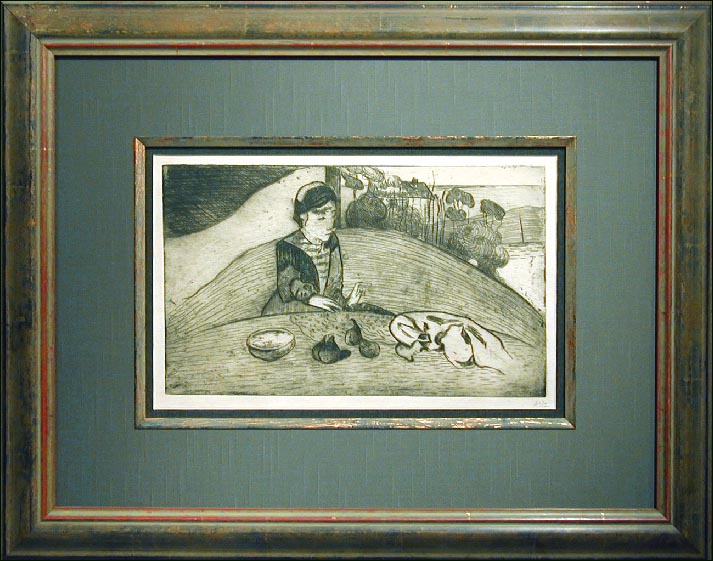
Paul Gauguin — La Femme Aux Figues (Guerin 88; Mongan, Kornfeld, Joachim 31 III/III). Original etching and aquatint (lavis) on softground zinc, 1899. First published in the portfolio GERMINAL in an edition of 100 impressions in greenish-gray ink, 268mm x 444mm. 10 additional impressions were made from the cut plate, which was reduced on the right side, down to 268mm x 418mm, by Madame Delatre, the printer’s widow. She then cancelled the plate by gouging 2 XX in the lower right of the cloth next to the figs. In 1966 the plate was purchased and many lighter, very imperfect impressions were made from it until the plate finally gave out, producing very gray, murky impressions, lacking the background cross-hatching and much of the drypoint and burin work. Well, how about that??? Here’s a very valued print — Gauguin loved and produced woodcuts — he hated the etching process, and produced only the one example in his lifetime, and you can bet there’s a lot of controversy over that, but the fact that he did the platework has now been very fully examined and verified. You can easily determine which state this print might be by merely measuring the plate size and looking at the cross-hatching and other drypoint areas on the print, and determining whether the ink is green or black … at least I can, and that’s how I know what I’ve got here. How much is it worth? Gosh, that depends on so many factors…but the most important factor is the plate size — it happens to be the smaller size, but with no sign of the cancellation, which makes it one of the ten Madame Delatre made for herself. If I’m right, this impression would be worth well above the $7,500-$14,000 gallery prices realized by the most miserable of washed-out restrikes made in the 1960s. Let’s take a look at another item in my online gallery of fine art, all being offered to support the Interdimensional Underground Railway … I mean, of course, The Ashram. Take a look:
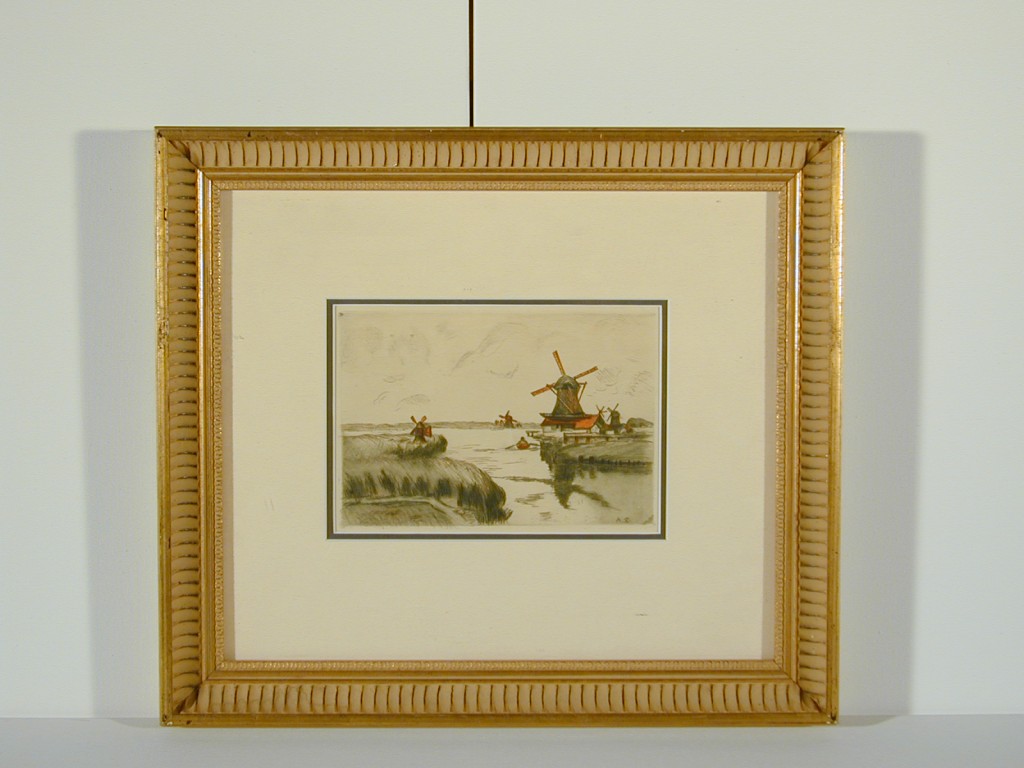
Guillaumin — Vue prise de Saardam — from Histoire des Peintres Impressionistes, Pissarro, Monet, Sisley, Renoir, Morisot, Cezanne, Guillaumin; Published by Theodore Duret in Paris, 1906. RARE thus. Later editions and impressions were made, but this is the original 1906 edition. Price on this? Well, heck, you can get ’em cheaper if you don’t mind the later editions…I happen to prefer the earlier states, the earlier the better, and this is a rich, deep, dark impression. My price today would be $11,000, because that’s what I’d have to pay to get another, but that wouldn’t be quite fair… If I weren’t concerned with replacing it, which I’m not, because I have another in my private collection, a fair price in my gallery today would be $1,850. It was once part of a well-attended Impressionists exhibition at several museums, and that carries forward with its provenance papers, together with the fact that it came from the collection of renowned art expert Theodore Donson, giving it special importance that a piece acquired in the ordinary way would definitely not have or be able to acquire. Isn’t this fun? I told you it would be. Here’s another item in my stable of fine art for auction:
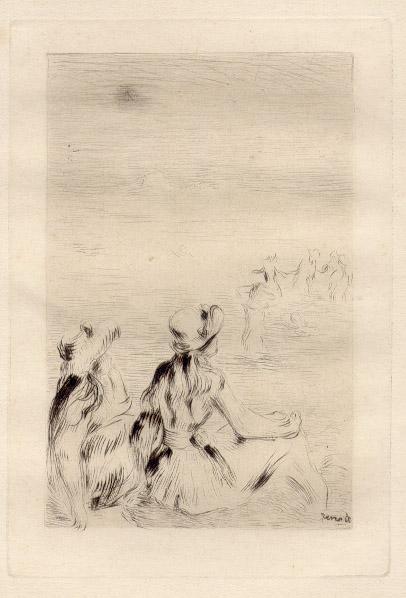 If you’re a Renoir fan, I don’t even have to tell you about this incredibly famous etching, but look carefully — you’ll see the bathers clearly, out in the water. Note that fact, because it says to you that this is a FIRST STATE impression, and that adds tens of thousands of dollars to the value. Want to know more about this? Fair enough, I’ll enter the data in: PIERRE-AUGUST RENOIR — SUR LA PLAGE, A BERNEVAL — First State before the plate was reduced (there’s one clue as to which state this is), plate size 180mm x 140mm. VERY RARE in First State, with bather in the right middle portion of the water, just beside the major figures in the composition. The bather is significantly missing in the 2nd and 3rd States, thus firmly identifying this impression as belonging to the 1st State. Strong drypoint and burr on hair, under hat of right figure and on front and back of crown of hat on left figure and on bather in water indicate a VERY EARLY impression in the First State, extremely rare thus. SIGNED Renoir lower right, about 1.5mm above plate edge. FULL MARGIN on untrimmed paper, with original binding evident on left, with remnants of original binding thread lower left. A very important early impression of a major work, seldom seen on the open market, and definitely a candidate for museum donation either now or later. My gallery price-tag on this is $38,500, but I have others far less expensive if you don’t care about the rarity factor. Still with me? Of course you are, or you wouldn’t be reading this. Let’s look at one more example of what I might offer at a fine art charity auction:
If you’re a Renoir fan, I don’t even have to tell you about this incredibly famous etching, but look carefully — you’ll see the bathers clearly, out in the water. Note that fact, because it says to you that this is a FIRST STATE impression, and that adds tens of thousands of dollars to the value. Want to know more about this? Fair enough, I’ll enter the data in: PIERRE-AUGUST RENOIR — SUR LA PLAGE, A BERNEVAL — First State before the plate was reduced (there’s one clue as to which state this is), plate size 180mm x 140mm. VERY RARE in First State, with bather in the right middle portion of the water, just beside the major figures in the composition. The bather is significantly missing in the 2nd and 3rd States, thus firmly identifying this impression as belonging to the 1st State. Strong drypoint and burr on hair, under hat of right figure and on front and back of crown of hat on left figure and on bather in water indicate a VERY EARLY impression in the First State, extremely rare thus. SIGNED Renoir lower right, about 1.5mm above plate edge. FULL MARGIN on untrimmed paper, with original binding evident on left, with remnants of original binding thread lower left. A very important early impression of a major work, seldom seen on the open market, and definitely a candidate for museum donation either now or later. My gallery price-tag on this is $38,500, but I have others far less expensive if you don’t care about the rarity factor. Still with me? Of course you are, or you wouldn’t be reading this. Let’s look at one more example of what I might offer at a fine art charity auction:
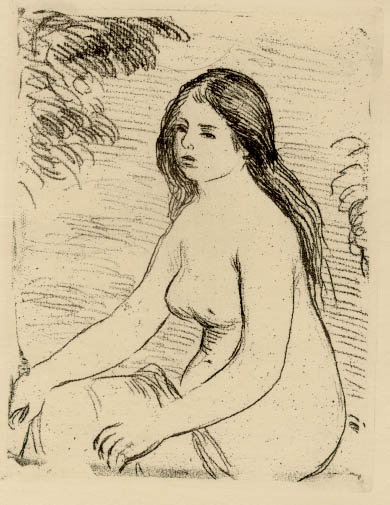
PIERRE-AUGUST RENOIR — FEMME NU ASSISE — Stella 12 — Softground etching, about 1906, Only State. 188mm x 149mm on full margin stock, 195mm x 256mm FROM THE FIRST EDITION. This softground etching was produced in Theodore Duret, L’Histoire des Peintres Impressionistes, Paris, Floury, 1906, facing page 106. The original foolscap separator with title comes with this RARE etching. Impressions were on HOLLAND paper (this is one of those) and a small number were printed in sanguine ink on Japan Paper for the Deluxe Edition. This is the EARLIER EDITION. It was later republished and bound-in to another book, Die Impressionisten, Theodore Duret, Berlin, B. Casirer, in 1909, but this is not that later edition. RARE thus, Provenance, Theodore Donson. My gallery tag on this is $8,500, but I might bring that up significantly, because there are no early impressions out there, just 1909 edition material, plus the usual grotesque restrikes made from the tired, well-worn — but still existing — etching plate at the Louvre in Paris. This is no restrike, no 1909 later edition. This is the real thing, museum-grade, not at all available to the general public. Okay, just one more Renoir, okay???
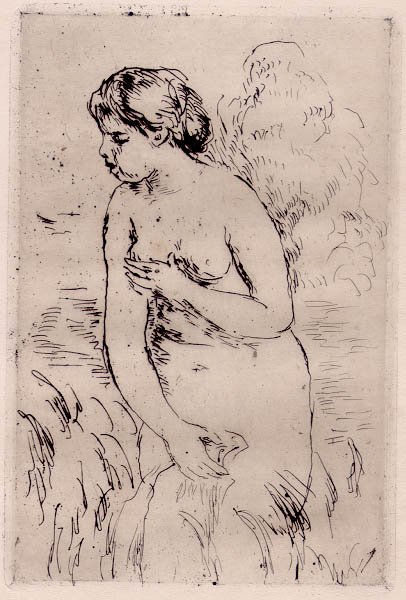
PIERRE-AUGUST RENOIR — BAIGNEUSE DEBOUT A MI-JAMBES. Etching, about 1910. Only State. 168mm x 112mm. Published by Theodore Duret and bound-in to Manet & the French Impressionists, London, G. Richards, 1910; then in Theodore Duret, L’Histoire des peintres impressionistes, 2nd Edition, Paris, Floury, 1919m facing page 96; finally in the 3rd edition of the same book by Duret. There do exist much later posthumous “restrikes” of this etching in limited editions. This is a very EARLY STATE with FRESH DRYPOINT, heavy burr and INKY EDGES around the border, thus indicating an early place in the run, EXTREMELY RARE THUS. Book binding and tissue are visible on the left edge of paper, uncut margins indicate specifically the 1910 edition — the earlier printing. The STRONG TONING on the plate indicates an earlier example from the First State just after the first PROOFS. Provenance, collection of Theodore Donson. My gallery tag says $8,500, but that was place on there some 25 years ago. If you buy it today, the price stands, but I will review the price to bring it in line with today’s market, which means a higher price, much higher — my guess is that in light of the fact that it is demonstrably an early state of the earlier state, the market price could be whallopingly high. You’ll note that all my Renoir etchings and lithographs are LIFETIME, never ever postumous! There’s a world of difference.
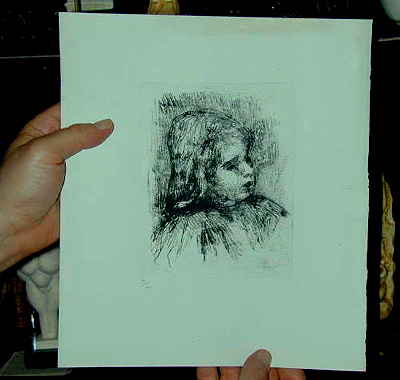
One more delicious Renoir Original for your delight. Please note the greenish color of the paper in the photo above, and also note that original oils, watercolors, sculptures, drawings and charcoals by any of these artists I’ve presented here would cost typically in the millions of dollars. Only by collecting works on paper, especially small editions of multiple signed prints, is affordable by any normal standards. If you’re an abnormally wealthy collector, I do happen to have some interesting items, but you’ll have to call ahead for an appointment. Here’s the most amazing Renoir original work on paper you’ll ever be offered: PIERRE-AUGUST RENOIR — Stella 18 — CLAUDE RENOIR, DE TROIS-QUARTS A DROITE, 1908 — OF THE UTMOST RARITY, POSSIBLY UNIQUE. Softground etching, 1908, 162mm x 130mm to the platemark on 257mm x 294mm GREEN TINTED Holland Paper watermarked “D & C Blaucw” with the typical ornamental design within, some slight discoloration at the top right, due to age; no tears, no repairs, as issued thus. Two States in an edition of 100, most of which have been lost. PENCIL NUMBERED BY THE ARTIST, 9/100. A LIFETIME IMPRESSION, not stamp-signed by his sons following his death, as was typical of many of the surviving studio prints, some of which were below standard. This is a fine, rich impression on a very unusual paper, and therefore rare and possibly unique. Read on: This study of Renoir’s younger son Claude was originally a pencil-sketch made sometime in the summer of 1908, then a few months later, translated into the etching plate as we see it here. Only a very few proofs were pulled at this time, immediately following Renoir’s visit to his painter friend Victor Roux-Champion. At the end of Renoir’s life, a few impressions were pulled just to test the plate; then in 1923 or 1924 a full edition of 100 was printed and acquired by the famous French art dealer, Sagot. These impressions are numbered in two groups of 50, on different papers, usually a wove stock. This example is not wove, but laid. All impressions of this plate are now extremely rare, but this one — numbered 9/100 — is extraordinarily unique, quite possibly the only one of its kind in the world. THIS IS THE ONLY KNOWN SURVIVING IMPRESSION ON GREEN HOLLAND PAPER. Garrec records a similar impression on Green Holland, numbered 1/100, but it was reportedly lost in the fire-bombing of Dresden during World War II. PROVENANCE: From the Collection of Theodore Donson.
My price? It’s gallery-tagged at $138,500, far below what you’d have to pay for any other AUTHENTICATED Renoir unique on the marketplace today. Anyone acquiring this would have a very desirable potential museum donation that could have lots of publicity around it, if it were played right, block-buster style. How? If you want to create a great effect with your local museum the winner, you have but to ask how it’s done. But you must have the item in hand first. Why am I offering these wonderful art objects? Actually, I’m not. The secret is that they’re my loss-leaders, acquired over the past 55 years judiciously and carefully, to lend authority, credibility and interest to my fine art galleries (I’ve had several, along with 6 successful restaurants) and auctions, and I’ve never had a return of anything I’ve sold in the fine art field yet. Why? I make damn sure of my ground before I stand on it and defend it. My real use for these “Million-Dollar Loss-Leaders” is to bring folks to the auction, where they’ll learn about the artists and get a good, deep glimpse into the world of art history — they will be amused, interested and delighted at what they hear. I tell stories about the artists, jokes related to art, and more. The Blue Chip Art is there to tickle, amaze and astound, not to sell. Think about it. I sell my ONLY PAUL GAUGUIN ORIGINAL ETCHING. What am I going to do to get his name back into my auctions? Well, I have to buy a woodcut. They’re expensive, but my complaint is that everyone has them. What I want is “P.T. Barnum Appeal”, meaning a sexy, exciting, even thrilling art discovery, and the fact that it’s for sale to the highest bidder is equally amazing, astounding and thrilling wonder! So come and watch the fun this coming weekend at the MemFest. You don’t have to bid, just watch, and listen, and learn. I’ll post more art as I have time. See You At The Top!!! gorby

